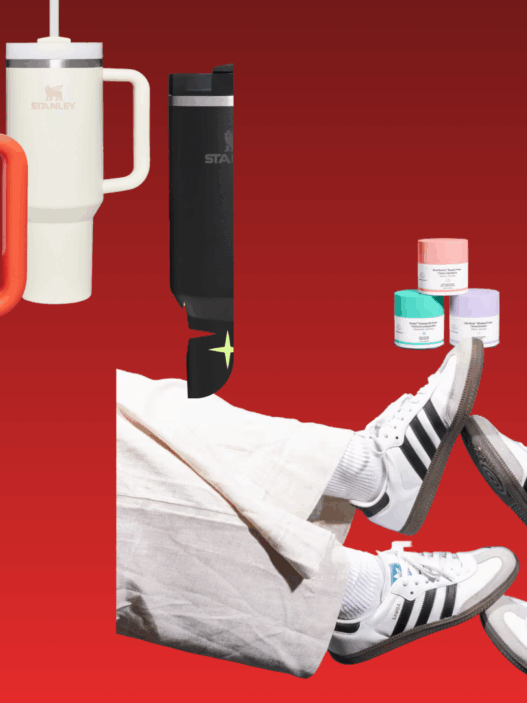As the market for sustainable products expands, fashion brands worldwide are stepping up their game with green trademarks that show their dedication to the environment. In a world where fast fashion, resource depletion, and climate change are significant issues, the combination of sustainable branding and intellectual property is gaining increasing popularity. We’re living in a pivotal moment for sustainable fashion, a perfect opportunity for brands to build their identities on genuine sustainable practices.
Picture this: you stroll into an H&M store and find a beautiful t-shirt adorned which comes along with a tag boasting sustainability. How do you feel? A normal person, just by purchasing that shirt, is likely to feel a wave of joy and pride, convinced that they are doing their part for the planet. This is the allure of green branding, an enticing promise that conjures up images of environmental harmony. But here’s the twist: while some brands flaunt their eco-friendly claims, securing genuine green trademarks is no easy feat. This often represents a more authentic commitment to sustainability, setting them apart from mere marketing fluff. As consumers become increasingly savvy to greenwashing tactics, the need for truly sustainable brands has never been more critical. A ‘Green Trademark’ can help build a way to that authenticity, creating real impact while building a brighter future for our planet.
Understanding Green Trademarks
Green trademarks, sometimes referred to as eco-friendly marks, have become increasingly popular recently as a means of encouraging sustainable development and environmental preservation, especially among youth. Social media deserves some, if not all, of the credit for this. Green trademarks are distinctive in that they may contain single or combined words, slogans, and figurative representations about sustainability or environmental protection, even though they are not a type of trademark in the legal sense. In simple terms, a trademark which is likely to make the consumer believe that the product attached to it is environmentally friendly is a green trademark.
It is crucial to realise that eco-labels and certification marks are not the same as green trademarks. While certification marks like Fair Trade and PETA Approved Vegan require adherence to strict standards and validation procedures, green trademarks represent a brand’s identity. Green marks, specifically the “Ecomark” issued by the Bureau of Indian Standards, are recognised as certification marks in India. The Ecomark scheme encompasses products like soap, detergent, food items, electronic goods, plastic products, cosmetics, and other packaged goods, while ‘GreenPro’, granted by the Confederation of Indian Industry, indicates that a product is environmentally friendly.
Why are Green Trademarks Important for Sustainable Fashion Brands?
According to a recent study conducted by Microsoft Advertising and Dentsu International, more than 90% of consumers are drawn to companies that are dedicated to and able to prove that they are prioritising sustainability. It went on to say that businesses that don’t adopt this as a strategy will experience negative consumer feedback in the upcoming years. More than half of Gen Z and millennial shoppers, according to other studies, will now pay more for these kinds of products.
Green trademarks are used to indicate that the fashion products sold under the brand, such as clothing, footwear, or accessories, are produced using environmentally responsible practices. This could include using organic materials, reducing carbon emissions, or engaging in circular fashion processes that replenish rather than deplete natural resources. The fashion industry contributes 2–8% of global carbon emissions and is the second-largest water-consuming sector. The industry’s environmental and social impact has gotten significantly worse with the rise of fast fashion, synthetic materials, and abusive labour practices. Let’s talk about green branding. Consumers of today, especially Gen Z and Millennials, are fuelling the demand for sustainable goods. A sustainable brand, if marketed properly, can lead you to success.
By allowing consumers to match their purchases with principles like sustainability, ethical sourcing, and environmental stewardship, these trademarks act as instruments for conscious consumption. For example, a consumer may choose Stella McCartney over fast fashion labels because of the brand’s commitment to cruelty-free and eco-friendly practices. Recently, sustainable Indian brands have also emerged, such as No Nasties, an organic vegan brand, and The Summer House, which promotes Indian craftsmanship and organic clothing, among many others.
Green trademarks are used by fashion brands to differentiate themselves from the competition and build strong moral and emotional ties with their clientele. By using an eco-friendly branding approach, you can gain a competitive advantage and improve public perception. For instance, Ecoalf is a sustainable fashion brand which came up with the campaign #BecauseThereIsNoPlanetB. This is an international initiative called “Upcycling the Oceans”, which aims to salvage marine debris from the ocean floor and turn it into high-quality yarn for clothing.

How to Get a Green Trademark in India?
Although the Indian Trademark Act does not contain any provisions specifically addressing green trademarks, businesses are still able to register a trademark with the Indian Trademark Office. Registering a green trademark in India follows the same legal process as any other trademark, under the Trade Marks Act, 1999. This includes distinctiveness, which requires the mark to set the applicant’s products or services apart. Non-deceptiveness, the mark must not give false information to the public. It should be capable of graphical representation and should have the capability of distinguishing the goods and services of the proprietor from those of others.
Green brands are frequently granted trademarks in India when they are paired with other words that are either descriptive or unique. For instance, ‘Mamaearth’ has registered its trademark in India. However, to avoid false sustainable claims and greenwashing, there are particular guidelines by the Central Consumer Protection Authority (CCPA). Generic terms like “green,” “eco-friendly,” and “sustainable” are forbidden without sufficient qualifiers. The guidelines guarantee a shared understanding by clearly defining terms associated with greenwashing. Only and only if the trademark is distinct and void of generic terms will it be able to get protection. It can be challenging for fashion brands to get their green trademarks registered, but once that is achieved, it will prove to be a competitive advantage. With power comes responsibility; therefore, after registering a green trademark, the brand becomes responsible for its sustainable claims. If found deceiving, it will have to face legal consequences.
Key Suggestions for India’s Sustainable Fashion Sector
Indian fashion brands, particularly those which are led by artisans, cooperatives, and small or medium-sized enterprises (SMEs), hold a unique advantage in aligning with global sustainability trends. As many of these entities already engage in traditional, low-impact production methods, such as handloom weaving, natural dyeing, and organic textile use, they have not yet realised their power. By leveraging green trademarks, they can effectively communicate their environmental and cultural values to consumers both in India and abroad.
Traditional Indian artisans find it easier to make the deliberate and responsible journey necessary to fully harness the power of green branding in the sustainability space because of their working methods. Making green claims alone is insufficient; they must be convincing and unambiguous. It’s critical that claims about sustainable practices, such as using organic cotton, putting zero waste procedures into place, or becoming carbon neutral, be supported by concrete data. By directing customers directly to the source, relevant technologies like blockchain or QR codes can guarantee transparency right away.
Furthermore, establishing legal protection and exclusive rights in both domestic and foreign markets depends on obtaining green trademarks under the Trade Marks Act of 1999. Green marketing may be effective, but a green trademark is authentic and can therefore work wonders. Recall that sustainability is more than just a fad, a catchphrase, or a short-lived campaign. It should be woven into the very fabric of the brand, embodying authentic Environmental, Social, and Governance (ESG) values that pervade every aspect of the business’s operations. Make sustainability a central part of what your brand wants to be, and you’ll see your brand flourish in a conscientious consumer base.
Conslusion
Imagine purchasing a product and seeing a bright green trademark. This is more than just a logo; it is a powerful statement of a fashion brand’s commitment to sustainability and environmental stewardship. Green branding must be supported by promises that are real, legally binding safeguards, if the fashion industry is to fully embrace sustainability. Incorporating responsibility into every fabric and brand is just as important to the future of fashion as creating innovative designs. It is highly likely to achieve great success if one is prepared to launch such a fashion brand at this time. However, it shouldn’t end here. Customers must learn to distinguish between companies that actually care about sustainability and those that are just following the trend of green marketing to increase sales. Let’s give ourselves the ability to choose wisely and back companies that are changing the world!


















